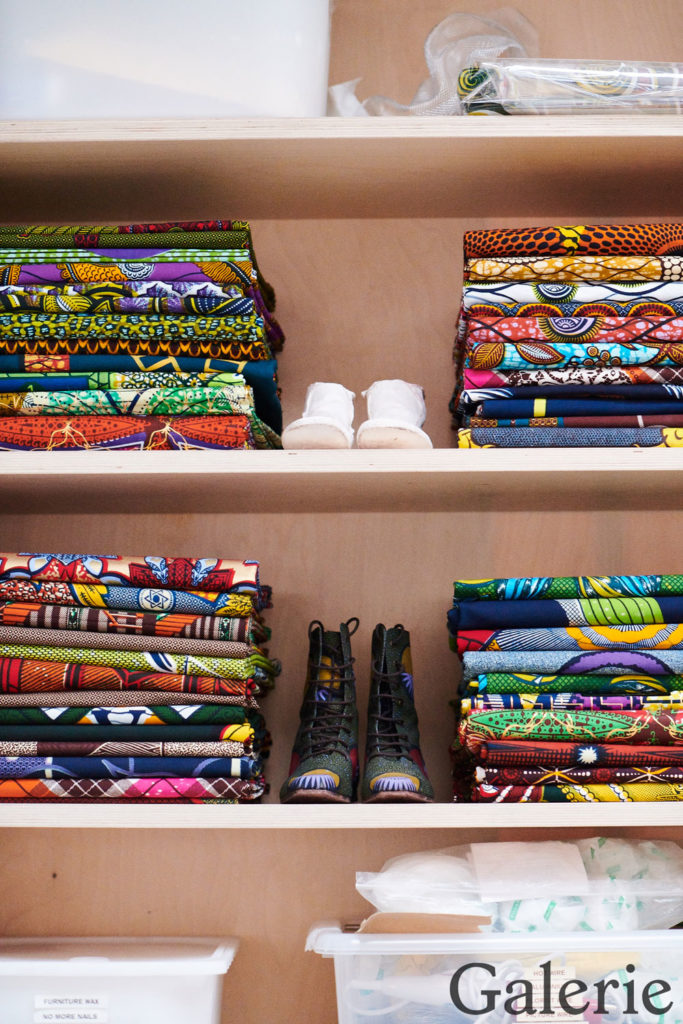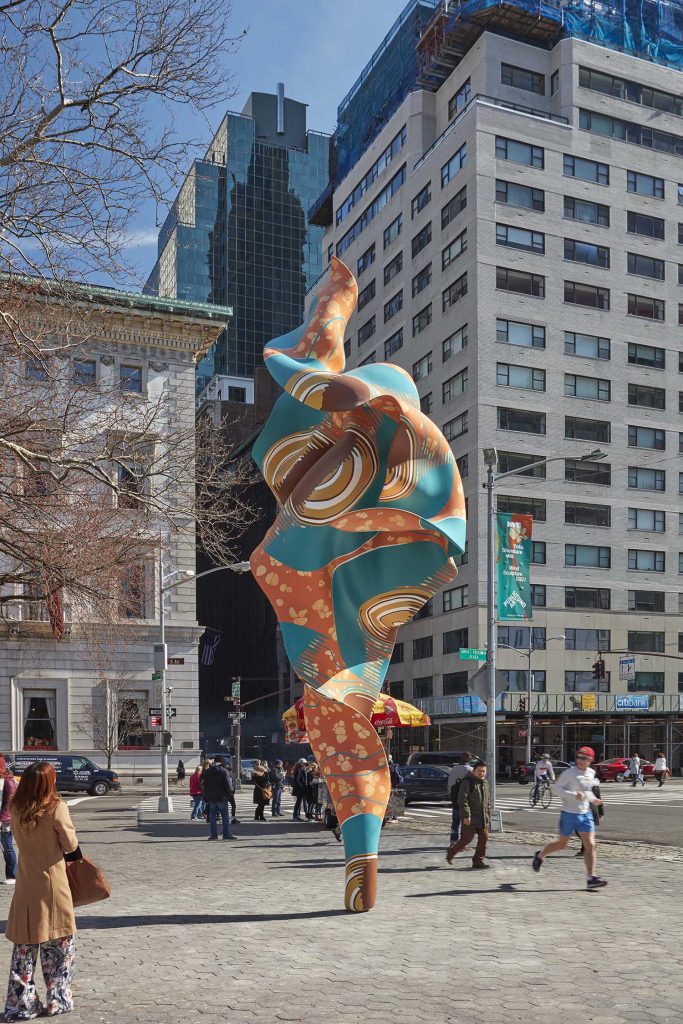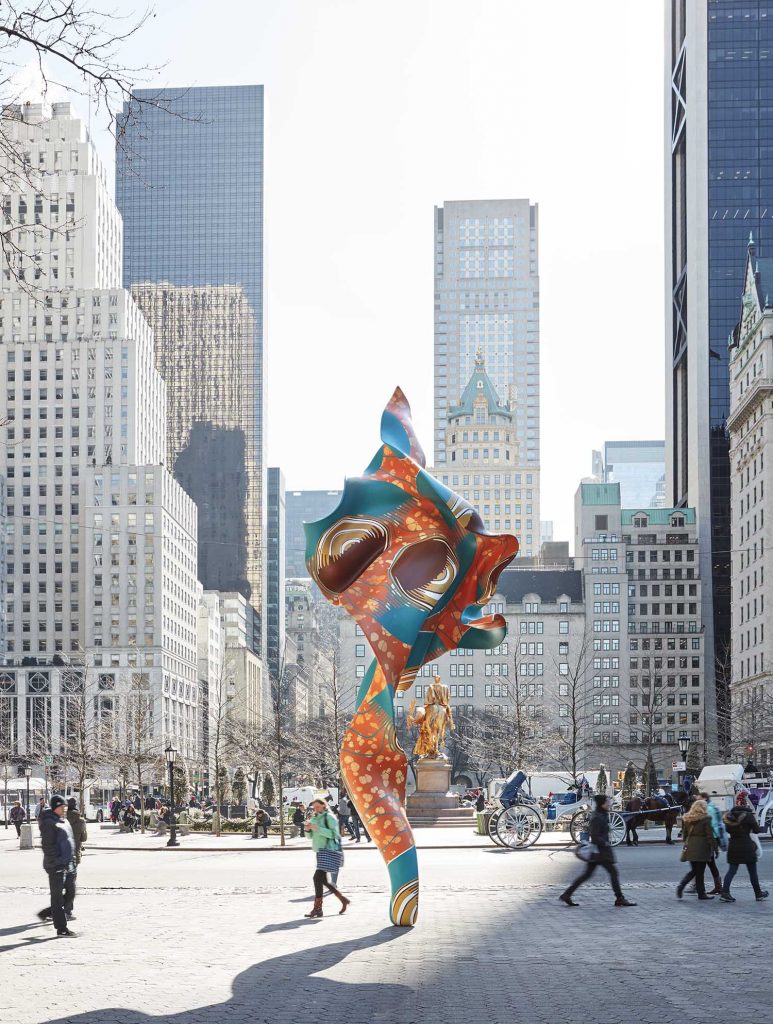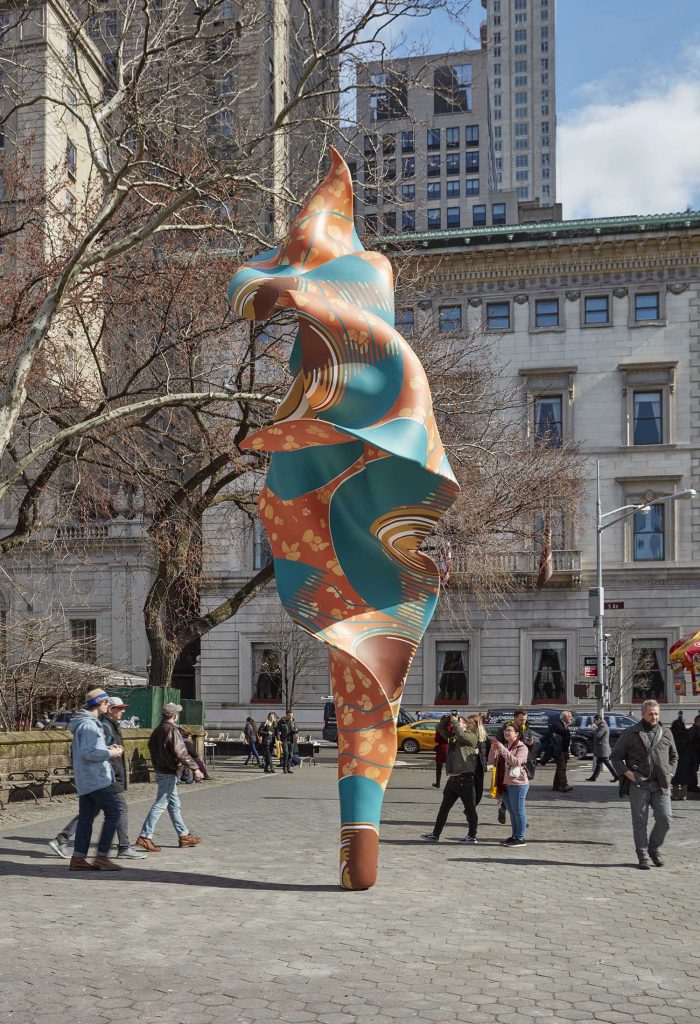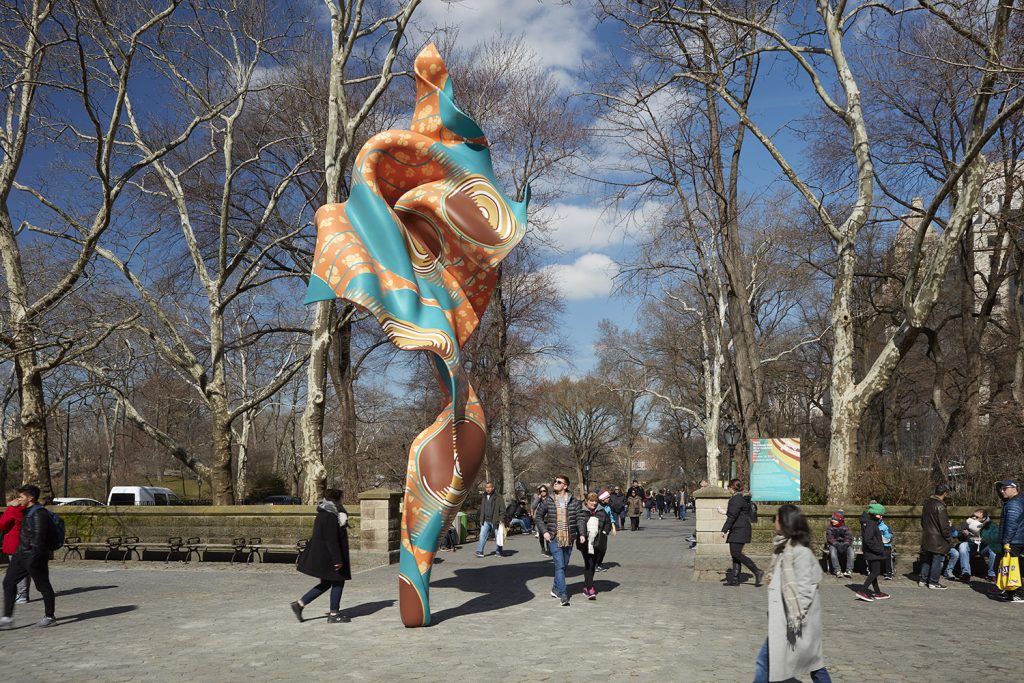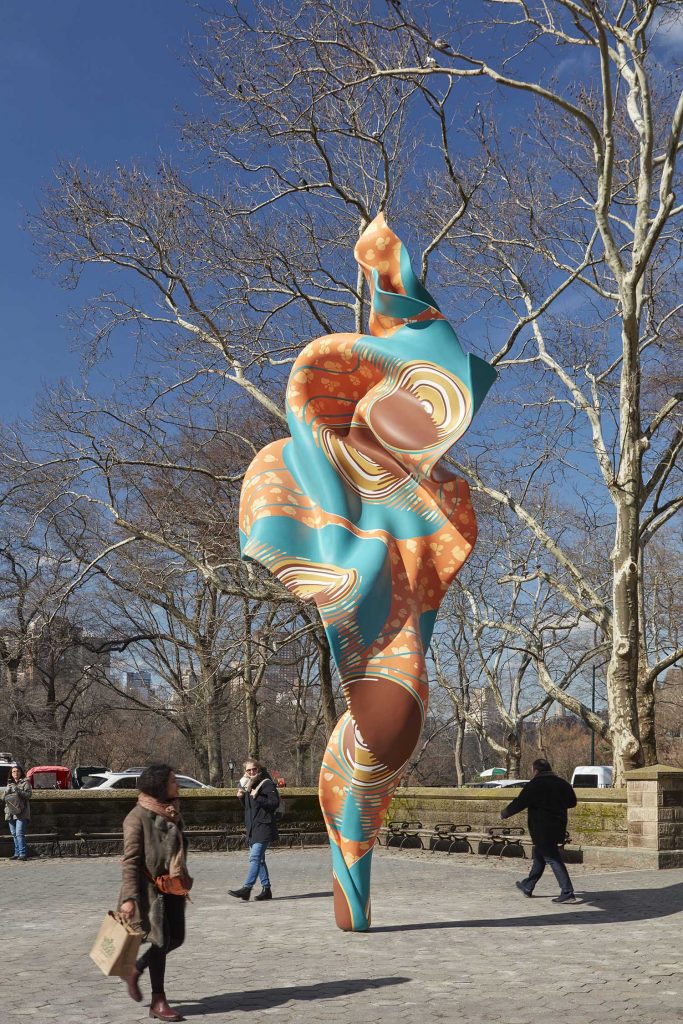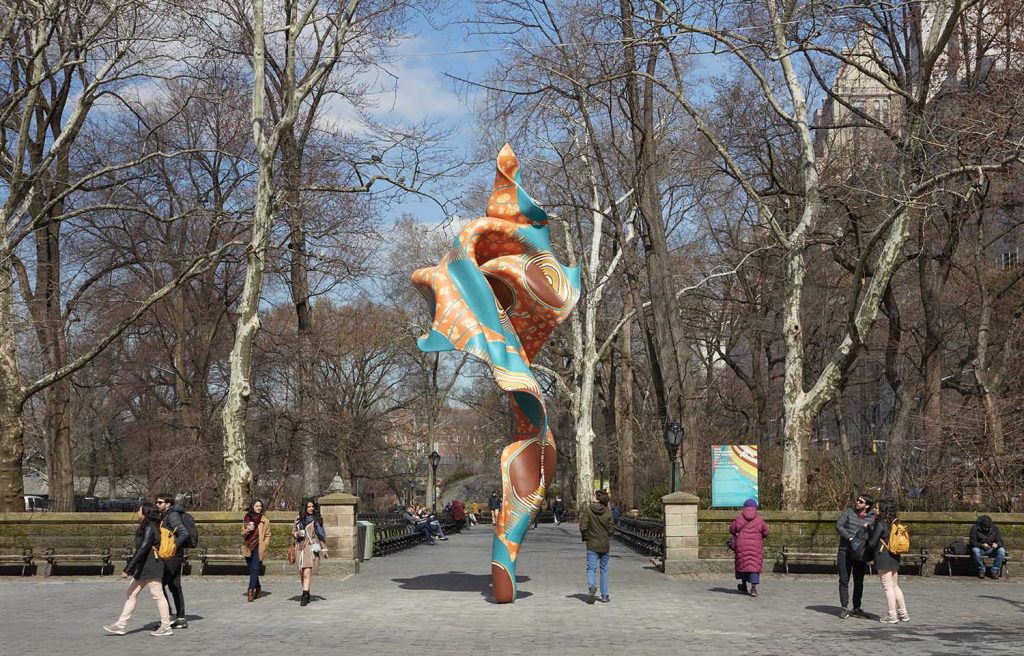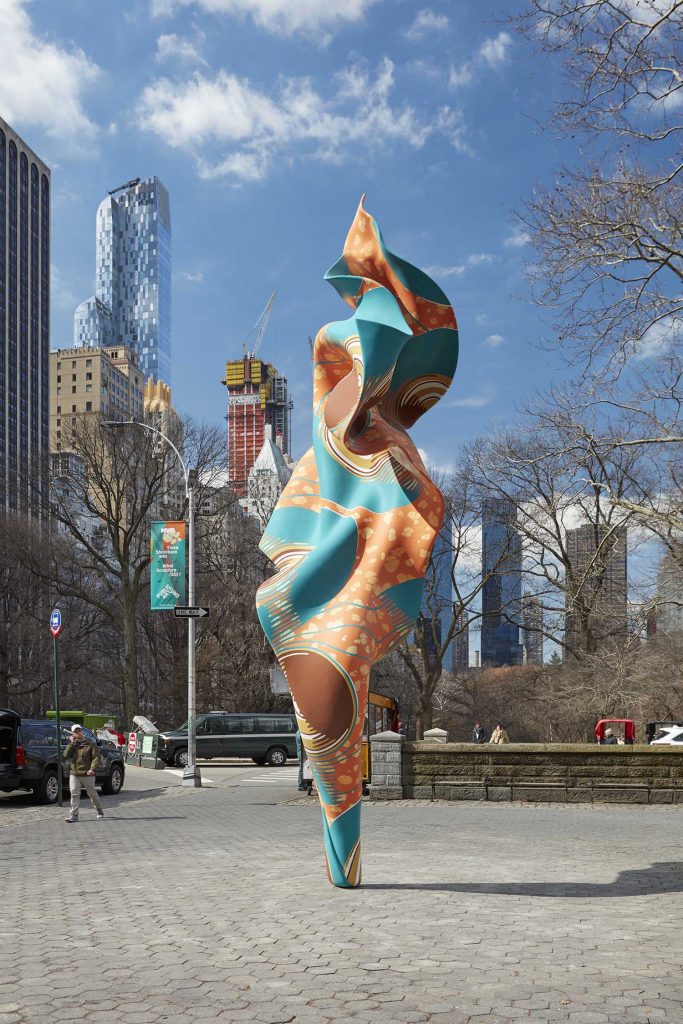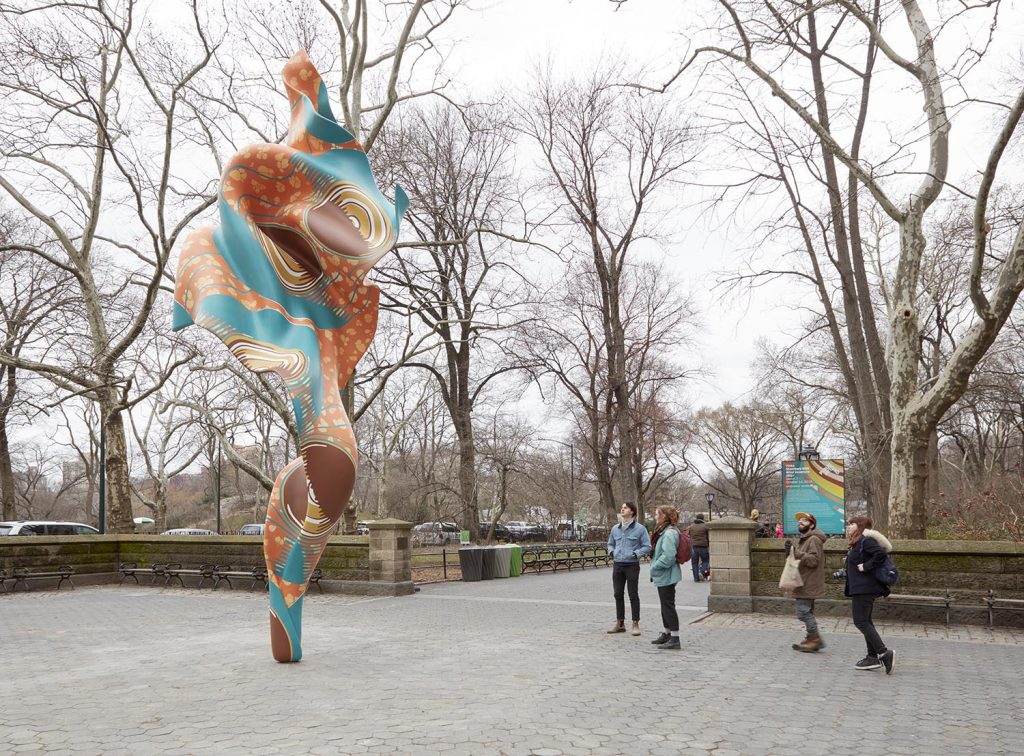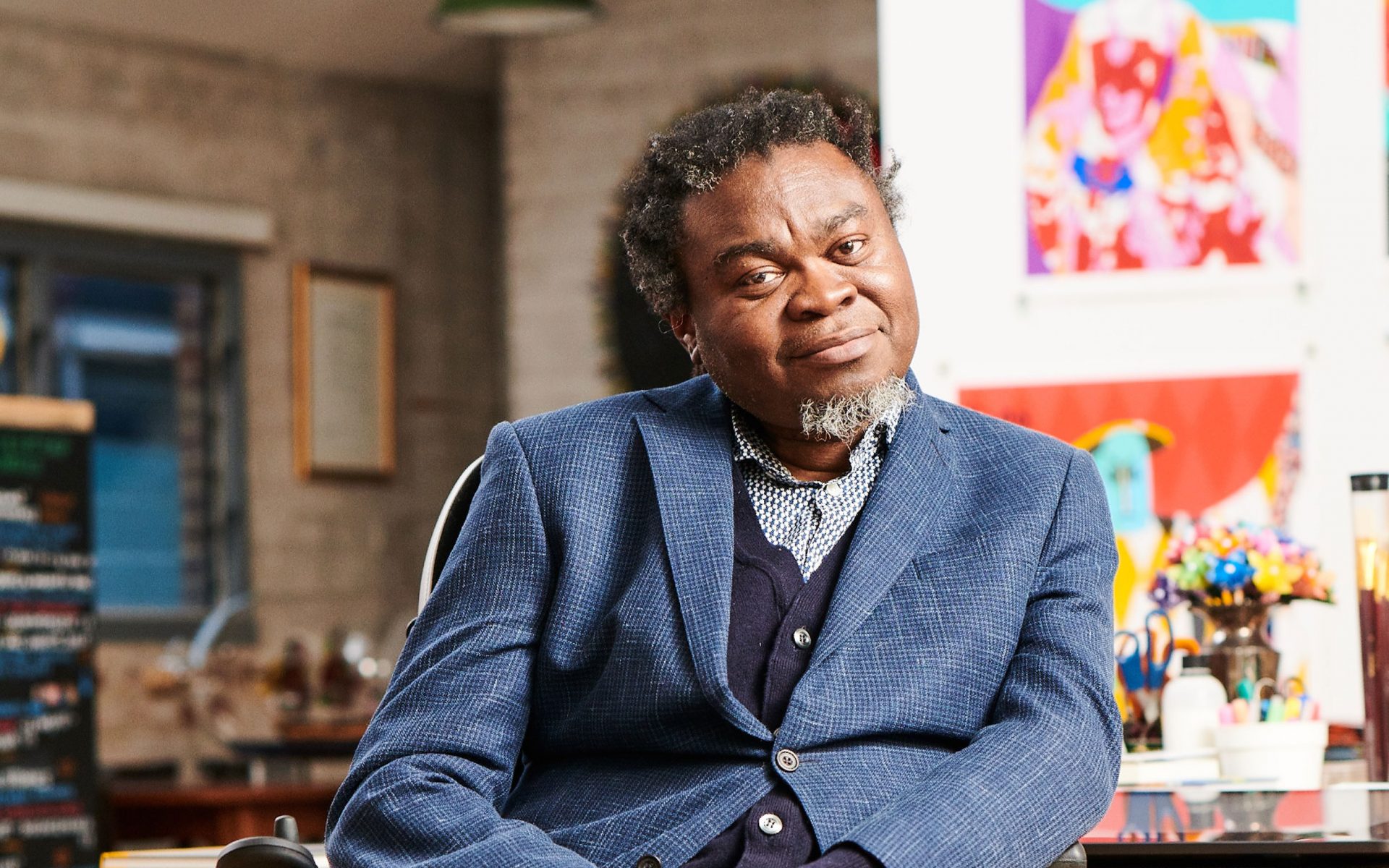

Inside Yinka Shonibare’s East London Studio
The celebrated British-Nigerian artist discusses his latest project for Public Art Fund, a billowing statement in Central Park
In the decade or so that Yinka Shonibare MBE has been living and working in East London, the once grimy, now trendy area has undergone huge changes. And while the British-Nigerian artist’s work has evolved too, he keeps coming back to the vibrant, Indonesian-inspired textiles known as Dutch wax fabrics, which were produced in the Netherlands, sold in Africa, and are still strongly associated with that continent. For Shonibare, who has used the fabrics to dress mannequins and clad entire rooms, they are a way to explore issues of race, identity, class, and colonialism.
“I grew up going back and forth between Lagos and London,” says the artist, seated in a wheelchair in his studio (a rare illness at 18 left him partially paralyzed). “Ideas about a multiplicity of identities, global travel, trade, and migration have always interested me.”
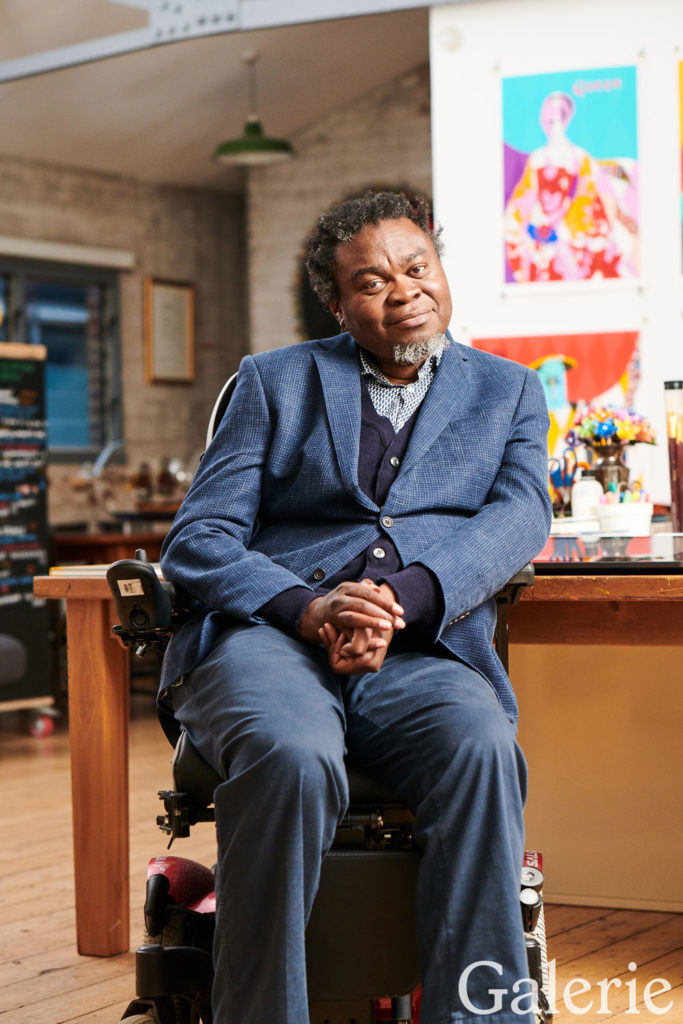
Reflecting those continuing preoccupations is Shonibare’s latest project, a towering outdoor work titled Wind Sculpture (SG) I. Commissioned by the Public Art Fund in New York, the 23-foot-high swirl of exuberantly patterned fabric will be installed from March 7 to October 14 in Doris C. Freedman Plaza, at the southeast corner of Central Park. “I am very interested in how we can make a contemporary monument,” says Shonibare, who has created a number of large-scale public art pieces.
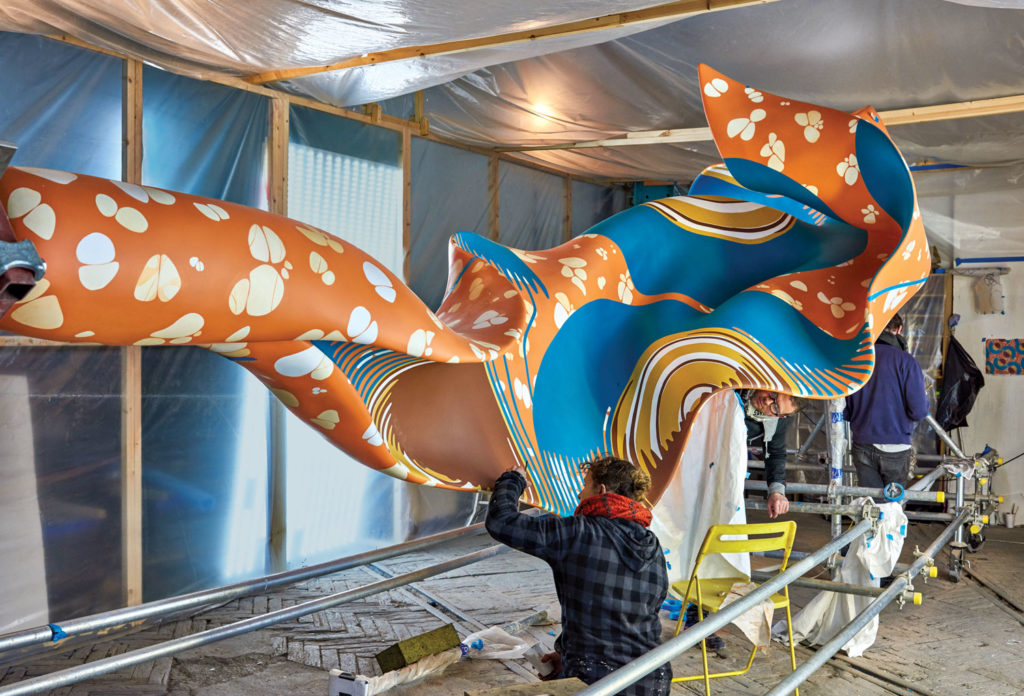
The artist’s wind-sculpture series, which began in 2013, was inspired by the giant ship-in-a-bottle he created in 2010 for the Fourth Plinth in London’s Trafalgar Square. “When I was working on the sails, I felt they were dynamic enough to be stand-alone sculptures,” he explains. He began to experiment, blowing a hair dryer into swatches of fabric to model the effects of wind. (More recently, he started using a 3-D printer for his modeling.) The final, scaled-up designs are cast in fiberglass and then hand-painted with Dutch wax–style patterns of Shonibare’s invention. “There is magic in making something quite hard look soft,” he says of capturing the flutters and folds.
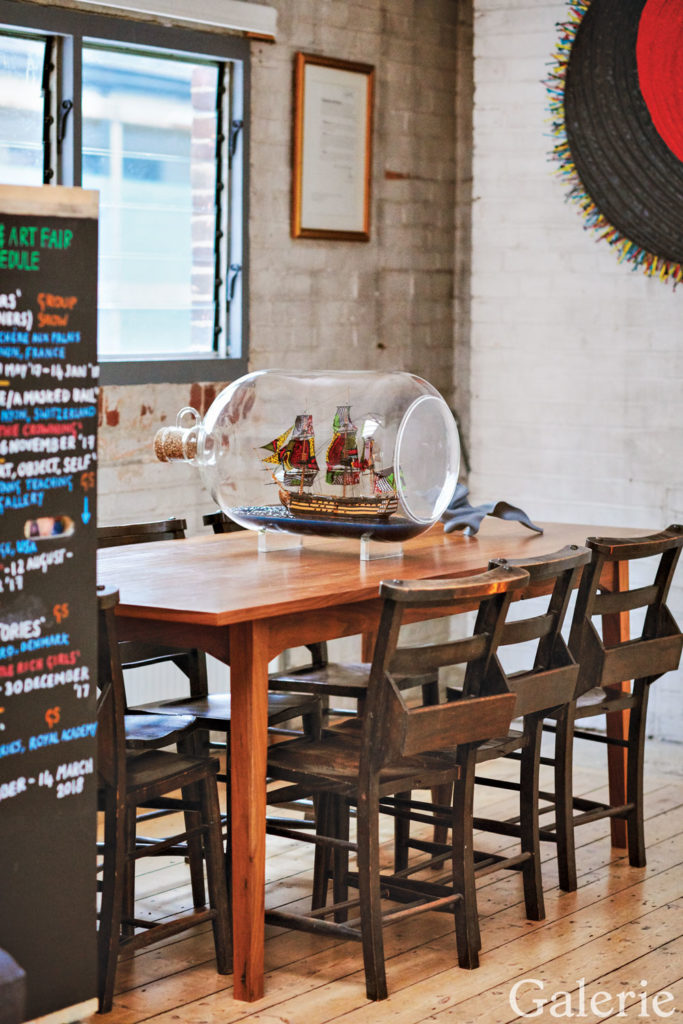
The artist notes that the history of these fabrics “involves global travel and trade, and wind is symbolic of the movement of ships and a metaphor for migration, which is highly relevant in the U.S., a country of migrants.” Most important, he insists, is that the work be visually compelling. “A lot of public sculpture can be rather dull,” Shonibare says candidly. “I want color, dynamism, and fun in the public realm.” yinkashonibarembe.com; publicartfund.org
